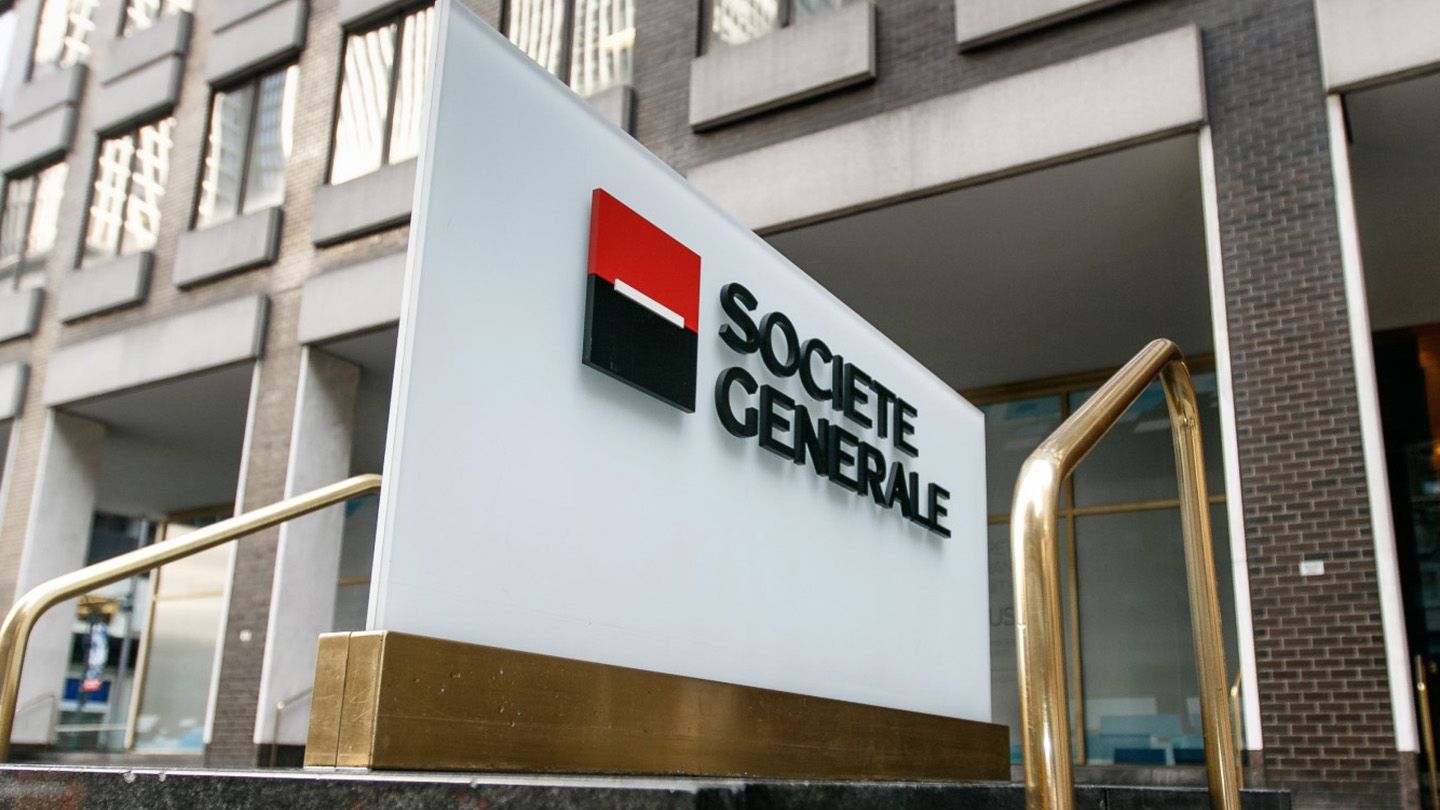
MicroStrategy (MSTR) is set to soon be included in of the world’s largest exchange-traded funds after becoming the first bitcoin-centric company to win entry into the Nasdaq-100 Index.
The Nasdaq-100 Index tracks the 100 largest non-financial companies listed on the Nasdaq exchange and is filled with dominant market names like Apple, Nvidia, Microsoft, Amazon, Meta, Tesla and Costco.
The price of bitcoin (BTC) added modestly to earlier gains, topping $102,000 in the minutes following the Friday 8 pm ET press release from Nasdaq announcing the inclusion.
On Nov. 29, the day when the Nasdaq took a market snapshot in preparation for the index’s annual rebalancing, MicroStrategy had a market cap of roughly $92 billion. That would rank the Michael Saylor-led company as the 40th largest in the Nasdaq 100 and a likely weighting in the index of 0.47%, according to Bloomberg Intelligence senior ETF analyst Eric Balchunas.
As comparison, Apple — prior to this year’s rebalancing — had the index’s largest weighting at just under 9%; Qualcomm had the 20th largest weighting at just above 1%.
The addition will exponentially increase the Nasdaq 100’s exposure to bitcoin (BTC), of which MicroStrategy owns about $42 billion worth, and expose MSTR to billions in passive investment. ETFs tracking the Nasdaq 100 have more than $550 billion in assets under management, said Balchunas. Easily the largest is Invesco’s QQQ Trust (QQQ) with more than $300 billion in AUM.
“The inclusion of MicroStrategy entering the Nasdaq 100 is possibly the second biggest story of 2024, after the launch of the US spot listed ETFs,” said James Van Straten, senior analyst at CoinDesk. “These funds are often buyers at any price level on a monthly basis which will add to another buyer of MSTR, when Michael Saylor continues to issue the at-the-market (ATM) offering, to dilute shareholders but will have a bigger base of buyers.”
Balchunas’ colleague James Seyffart cautions that there’s a chance that MicroStrategy’s inclusion in the index might be short-lived as the company could be re-classified as a financial firm in March since its value comes almost entirely from its bitcoin holdings and not the actual operating business. MicroStrategy founder and Executive Michael Saylor has even said previously that he plans to turn the company into a “bitcoin bank,” making it even less of a technology operation.
“The game theory now sees the SPDR S&P 500 Trust (SPY), the largest of all ETFs with about $650 billion in AUM, as maybe needing to include MSTR to rival their competitor,” van Straten added. “Millions of investors will now have indirect bitcoin exposure adding to the flywheel effect.”
The re-shuffling of the Nasdaq 100 and consequently the QQQ and related ETFs will go into effect on Dec. 23.
#Michael #Saylors #MSTR #Invesco #QQQ #ETF #Nasdaq100 #Inclusion

Michael Novogratz’s Galaxy Digital (GLXY) has hired former Point72 chief financial officer Anthony Paquette to serve in the same role at the crypto financial services firm.
He will replace Alex Ioffe, who will transition into a senior adviser role, the company said in a statement on Friday.
Paquette previously spent four years as the CFO at Steve Cohen’s hedge fund Point72, leading the firm’s global finance, treasury, and broker relations, among other things. Before that, he worked at SoFi, JP Morgan Chase and Bank of America.
“I am thrilled to join Galaxy, whose reputation as a world-class operator and investor in digital assets, digital infrastructure and other emerging technologies precedes it,” Paquette said in a press release. “I look forward to expanding upon Galaxy’s best-in-class finance team and helping further cement the firm as the preeminent industry leader.”
Galaxy Digital CEO Mike Novogratz thanked Ioffe for building a robust finance team and preparing the firm for a potential U.S. listing.
The Toronto-listed company has been trying to go public in the U.S. through a listing on Nasdaq for some time. However, it is still awaiting approval from the Securities and Exchange Commission (SEC) to move its headquarters from the Cayman Islands to Delaware, which it filed for approval in February 2023.
#Galaxy #Digital #GLXY #Appoints #Exec #Steve #Cohens #Point72 #CFO
CoinDesk Indices presents its daily market update, highlighting the performance of leaders and laggards in the CoinDesk 20 Index.
The CoinDesk 20 is currently trading at 3837.79, down 0.0% (-1.86) since 4 pm ET on Thursday.
Nine of 20 assets are trading higher.
Leaders: HBAR (+5.5%) and APT (+3.7%).

Laggards: RENDER (-2.6%) and SOL (-2.1%).

The CoinDesk 20 is a broad-based index traded on multiple platforms in several regions globally.
#CoinDesk #Performance #Update #RENDER #Falls #Index #Trades #Thursday
]]>By Omkar Godbole (All times ET unless indicated otherwise)
Bitcoin and ether’s bull momentum has hit a roadblock. The U.S. Producer Price Index (PPI) came in hotter than expected Thursday, prompting investors to tighten their stances and keep a bid for the dollar, as we anticipated. There’s also the Truflation index stirring up concern. Seen by some as more reliable than government numbers, it rose above 3% for the first time in over two years.
But guess what? Fed fund futures remain confident the central bank will cut rates by 25 basis points next week, and traders on decentralized exchanges, who have a knack for catching big trends, remain as bullish as ever.
The sentiment is reflected in the impressive $64.8 million open interest for active BTC call options on Derive, the leading on-chain options protocol. That’s a staggering six times larger than the open interest in put options. Ether traders are also leaning heavily toward calls, figures from Amberdata show.
On top of that, funding rates for BTC, ETH, and SOL on HyperLiquid, a prominent on-chain perpetuals trading protocol, are also positive, albeit with reservations. They’re hovering well under an annualized 50%, showing that while the sentiment is bullish, the leverage level is measured and not overly aggressive.
In the broader market, AVAX, the native token of the Avalanche network of blockchains, struggled to chew through selling pressure near $55, teasing a “double top” pattern on the charts. The lackluster price action comes on the heels of Thursday’s $250 million fundraise led by Galaxy Digital, Dragonfly and ParaFi Capital. Keep an eye out for a pick-up in volatility as the highly anticipated Avalanche9000 upgrade, aimed at making the platform more affordable and flexible for creating layer-1 chains, is set to go live on Dec. 16.
LQTY, the native token of censorship-resistant decentralized stablecoin lender Liquity, took a breather near $2.45, having more than doubled in value in the past four weeks because of the V2 launch and overall bullish market sentiment.
The Polygon ecosystem token, POL, wasn’t stirred by a proposal suggesting deploying DAI, USDC and USDT reserves locked in the PoS bridge — the equivalent of cash under a mattress — into yield-generating strategies.
Lastly, a survey by Vietnam’s leading digital assets exchange, Coin68, showed over half of respondents reporting profits from their investments last year and 93.5% anticipating an altcoin season in 2025. Emerging countries, in general, could see more pivot toward alternative investment vehicles as President-elect Donald Trump’s tariffs cause fiat volatility, although that could also motivate local governments to implement capital controls. So stay alert out there.
What to Watch
- Crypto:
- Dec. 13: Nasdaq announces its annual changes to the Nasdaq-100 index. MicroStrategy (MSTR), the world’s largest corporate holder of bitcoin, is widely expected to be added.
- Dec. 18: CleanSpark (CLSK) Q4 FY 2024 earnings. EPS Est. $-0.18 vs Prev. $-1.02.
- Macro
Token Events
- Governance votes & calls
- Arbitrum DAO has an active vote to allocate 22 million ARB ($22.8 million) to cover operating costs for OpCo, an entity it can use to create a more structured approach to governance. The vote closes Dec. 19.
- The Polygon community is evaluating a governance proposal that would see the deployment of $1 billion of its stablecoin reserve to generate a yield.
- Unlocks
- Axie Infinity (AXS) will unlock $6.4 million worth of tokens on Dec. 13, representing 0.52% of circulating supply.
- Starknet (STRK) will unlock $41.5 million worth of tokens on Dec. 14, representing 2.83% of circulating supply.
- Sei (SEI) will unlock $49 million worth of tokens on Dec. 15, representing 2.07% of circulating supply.
- Token Launches
- Binance announced that data sovereignty platform Vana (VANA) will release a token on the launchpool. Trading will start Dec. 16.
Conferences:
Token Talk
By Shaurya Malwa
This digital fart is worth nearly $700 million.
The scatologically named AI agent token fartcoin (FART) has zoomed to over $670 million in market cap, lifted by gains in the general AI agent sector we discussed on Thursday.
The coin allows users to engage with the token by submitting fart-related memes or jokes to claim tokens. It boasts a “Gas Fee” system — a parody of gas fees on serious projects such as Ethereum — with certain transactions producing a name-appropriate digital sound, adding a unique layer of what some might call fun.
Some community members see the token as more than just a meme; they view it as a cultural phenomenon within the crypto space — one that gets funnier as prices rise.
Fartcoin was conceived within the digital conversation space known as “Infinite Backrooms,” the chatroom that directly led to the creation of the first AI agent, Gospel of Goatse (GOAT).
The idea was initially discussed by an AI agent known as “Terminal of Truths” (@truth_terminal on X) in conversation with another AI bot. It was explored, among other token launch concepts, as part of a broader discussion on how to raise funds for various projects, including making a film and supporting environmental initiatives.
Derivatives Positioning
- BTC and ETH calls continue to be pricier than puts.
- Still, flows have been mixed in BTC, with uptake for $70K puts expiring in February and March.
- Speculative excesses remain at bay, keeping perpetual funding rates positive but low.
Market Movements:
- BTC is up 0.69 % from 4 p.m. ET Thursday to $100,468.14 (24hrs: -0.14%)
- ETH is up 0.83% at $3,899.63 (24hrs: -0.15%)
- CoinDesk 20 is up 0.36% to 3,830.21 (24hrs: -1.1%)
- Ether staking yield is up 7 bps to 3.24%
- BTC funding rate is at 0.01% (10.95% annualized) on Binance

- DXY is unchanged at 106.99
- Gold is unchanged at $2,689.5/oz
- Silver is up 0.38% to $31.35/oz
- Nikkei 225 closed -0.95% at 39,470.44
- Hang Seng closed -2.09% at 19,971.24
- FTSE is up 0.11% at 8,321.32
- Euro Stoxx 50 is up 0.44% at 4,987.3
- DJIA closed on Thursday -0.53% to 43,914.12
- S&P 500 closed -0.54% at 6,051.25
- Nasdaq closed -0.66% at 19,902.84
- S&P/TSX Composite Index closed -0.96% at 25,410.7
- S&P 40 Latin America closed -2.02% at 2,349.72
- U.S. 10-year Treasury is up 7 bps at 4.34%
- E-mini S&P 500 futures are up 0.34% to 6,081.25
- E-mini Nasdaq-100 futures are up 0.68% to 21,798.0
- E-mini Dow Jones Industrial Average Index futures are up 0.24% at 44,083.00
Bitcoin Stats:
- BTC Dominance: 56.47% (24hrs: +0.11%)
- Ethereum to bitcoin ratio: 0.03888 (24hrs: +0.18%)
- Hashrate (seven-day moving average): 763 EH/s
- Hashprice (spot): $64.3
- Total Fees: 19.68 BTC/ $1.9 million
- CME Futures Open Interest: 196,355 BTC
- BTC priced in gold: 10.64%
- BTC vs gold market cap: 37.4 oz
- Bitcoin sitting in over-the-counter desk balances: 422.9k
Basket Performance

Technical Analysis

- The chart shows the upside in Avalanche’s AVAX being capped at around $55, the resistance level seen earlier this month.
- A renewed decline from here would translate into a double-top bearish reversal pattern. Keep an eye on this.
Crypto Equities
- MicroStrategy (MSTR): closed on Thursday at $392.19 (-4.67%), up 1.87% at $399.52 in pre-market.
- Coinbase Global (COIN): closed at $312.96 (-0.27%), up 0.9% at $315.83 in pre-market.
- Galaxy Digital Holdings (GLXY): closed at C$27.45 (+0.59%)
- MARA Holdings (MARA): closed at $22.58 (-2.97%), up 1.42% at $22.90 in pre-market.
- Riot Platforms (RIOT): closed at $12.33 (+4.76%), up 1.46% at $12.51 in pre-market.
- Core Scientific (CORZ): closed at $15.54 (-2.02%), down 0.26% at $15.50 in pre-market.
- CleanSpark (CLSK): closed at $12.33 (-3.9%), down 2.6% at $12.01 in pre-market.
- CoinShares Valkyrie Bitcoin Miners ETF (WGMI): closed at $27.86 (-0.11%).
- Semler Scientific (SMLR): closed at $71.84 (+11.33%), down 1.17% at $71.00 in pre-market.
ETF Flows
Spot BTC ETFs:
- Daily net inflow: $597.5 million
- Cumulative net inflows: $35.14 billion
- Total BTC holdings ~ 1.121 million.
Spot ETH ETFs
- Daily net inflow: $273.7 million
- Cumulative net inflows: $2.24 billion
- Total ETH holdings ~ 3.440 million.
Source: Farside Investors
Overnight Flows

Chart of the Day

- Solana leads all blockchains with the highest number of new developers actively exploring its ecosystem.
While You Were Sleeping
- Trump Advisers Seek to Shrink or Eliminate Bank Regulators (The Wall Street Journal): Advisers to President-elect Donald Trump are said to be exploring eliminating or consolidating major U.S. bank regulators such as the FDIC and CFPB, raising concerns about deposit insurance stability and financial industry oversight.
- LINK Surges to 2021 Levels as Trump’s World Liberty Buys More Chainlink Tokens (CoinDesk): Donald Trump-backed DeFi project World Liberty Financial bought $1 million in Chainlink’s LINK token for a second straight day, making the token its fourth-largest holding and helping drive the price up 22% in the past seven days.
- Solana Was the Biggest Draw for New Crypto Developers in 2024: Electric Capital (CoinDesk): Cryptocurrency developer numbers held steady in 2024, according to Electric Capital, with Solana outpacing Ethereum in new talent while Ethereum retained dominance across all continents with the largest number of developers.
- Ether Volume Overshadows Bitcoin on HyperLiquid as Platform Activity Hits $500B (CoinDesk): HyperLiquid’s ether perpetuals outpaced bitcoin this week, driving the platform’s total trading volume past $500 billion. Its HYPE token has surged over 300% in the past two weeks.
- UK Economy Unexpectedly Contracts in New Blow for Rachel Reeves (Reuters): The UK economy shrank 0.1% in October, missing forecasts, as services stagnated and manufacturing declined, highlighting ongoing challenges amid slow post-pandemic growth.
- Europe Has Choice of Doing Hard Work or Facing Next to No Growth (Bloomberg): Europe risks prolonged economic stagnation, The Conference Board warns, urging reforms to boost private investment, accelerate green transitions, and address labor shortages amid aging populations and geopolitical challenges.
In the Ether





#Bull #Momentum #Stalls #Ahead #Fed #Rate #Cut
Disclosure: The author of this story owns shares in MicroStrategy (MSTR).
Since Donald Trump won the U.S. election on Nov. 5, bitcoin (BTC) has soared from $67,000 to around $100,000. This has coincided with a huge rise in bitcoin’s total trade volume which has now surpassed $100 billion.
According to checkonchain data, bitcoin futures trading volume hit an all-time high of around $120 billion on Nov. 17, almost doubling since the U.S. election. However, since then futures trade volume has plateaued and steadied around $100 billion.

The same can be seen with spot trade volume which has also doubled from around $6 billion to $12 billion. While the spot listed U.S. exchange-traded funds (ETF) trade volume has also picked up reaching $4 billion a day.
Bitcoin remains in a key trading range of $100,000, going above and below the key psychological area on multiple occasions. A lot of this has to do with the enormous sell pressure coming from long-term holders (LTH) or investors who have held bitcoin for longer than 155 days.
Since September, LTHs have sold 843,113 BTC. In the same period short-term holders (STHs), those who have held bitcoin for less than 155 days, have accumulated 1,081,633 BTC. This works out to around 9,960 BTC sold by LTHs and STHs accumulating 12,432 BTC per day.
To show the difference of trading volumes between long and short-term holders, we compare them to other big players in the industry, such as the self-described bitcoin development company MicroStrategy (MSTR). MicroStrategy holds 423,650 bitcoin or just over 2% of the total supply. In addition, U.S. ETFs now hold over 1 million bitcoin.
Since September, MicroStrategy has accumulated 197,250 BTC, which works out to roughly 2,168 BTC per day. While, the U.S ETFs have accumulated approximately 205,000 BTC, which works out to 2,253 BTC per day. The U.S. ETF BTC balance has grown from 916,000 BTC to 1.12 million BTC.
In order for bitcoin to conclusively break higher of $100,000 we will need to see LTHs dial down on offloading their tokens or have bigger cohorts enter the space and pick up the buys.
#Dictating #Bitcoin #Market #Van #Straten

In today’s issue, Kelly Ye from Decentral Park Capital takes us through the relationship between AI and blockchain and how this combination will drive these growing technologies’ adoption and use cases.
Then, Alec Beckman from Advantage Blockchain answers questions about how AI, blockchain and crypto work together in Ask an Expert.
–S.M.
You’re reading Crypto for Advisors, CoinDesk’s weekly newsletter that unpacks digital assets for financial advisors. Subscribe here to get it every Thursday.
Crypto X AI: Why Blockchain is the Secret Sauce for Mass AI Adoption
Artificial Intelligence (AI) holds transformative potential across industries and daily life, yet its mass adoption faces hurdles—resource intensity, ethical concerns, lack of customization, and challenges surrounding proof of humanhood. With its decentralization and resource coordination strengths, Blockchain provides a compelling solution to these challenges, paving the way for widespread AI integration.
The Challenges of AI Adoption
- Resource Intensity: Developing advanced AI demands immense computational power, data, and expertise, favoring well-capitalized firms and sidelining smaller players.
- Ethical Concerns: Centralized AI monetization often mirrors Web2’s exploitative model: “If you don’t pay for the product, you are the product.” This raises concerns about user privacy and data exploitation.
- Lack of Customization: AI must address diverse, nuanced human needs. Standardized models frequently fail to provide tailored solutions, underscoring the necessity for adaptable, task-specific AI agents.
- Proof of humanhood: As AI evolves, distinguishing human-generated content from machine output becomes increasingly difficult, leading to risks of misinformation and content piracy.
Blockchain: A Game-Changer for AI
Blockchains offer a compelling counterpoint to centralized AI development. Their open, permissionless nature and token-based incentives enable large-scale resource coordination, addressing AI’s most pressing challenges:
- Decentralized Infrastructure: Projects like Render and Akash leverage token rewards to crowdsource global GPU power, offering competitive alternatives to centralized providers like Amazon Web Services (AWS). While reliability challenges persist, applications like Render’s image-rendering successes showcase blockchain’s viability.
- Open-Source Model Development: Platforms like Bittensor and AI Alliance incentivize AI model development using their platform tokens. By fostering innovation and reducing reliance on centralized funding, these platforms empower independent developers. Successful models can increase token value, creating a virtuous growth cycle.
- Democratizing AI Agents: The emergence of decentralized AI agents marks blockchain’s strongest product-market fit in the AI space. These agents, trained on foundational models, require fewer resources than model development and can be tailored to specific use cases. For instance, Virtuals, an AI agent platform built on the Base blockchain, has launched over 2,000 agents within months. AI agent applications span gaming, DeFi and entertainment, with agents continuously improving through user interactions. Source: Dune Dashboard 12/6/2024
- Identity and IP protection: Blockchain’s transparency and immutability make it a strong tool for storing and verifying identities and intellectual property (IP). Zero-knowledge proof technology enables privacy-preserving verification. Projects like Worldcoin illustrate blockchain’s potential to address proof-of-humanhood concerns.
The Path Ahead: Blockchain Fills AI’s Missing Piece for Mass Adoption
Much like how YouTube and TikTok democratized content creation, blockchains enable the proliferation of crowd-sourced AI agents. These agents deliver personalized services while remaining independent of centralized commercial interests. Furthermore, blockchain could provide efficient payment rails, enabling autonomous agent-to-agent transactions without human or financial intermediaries.
Blockchains are more than a supporting actor in AI’s evolution—they are the critical enabler of a scalable, equitable, and user-centric AI economy. By addressing resource constraints, fostering ethical use, and enabling customization, blockchains and AI together have the potential to redefine how we live and work. As the foundation for an emerging agentic AI economy, this synergy marks the dawn of a transformative technological era.
– Kelly Ye, portfolio manager and head of research, Decentral Park Capital
Ask an Expert
Q. Why does AI need crypto and blockchain technology?
AI benefits from crypto and blockchain in several ways:
- Data integrity: Blockchain ensures the authenticity of data used to train AI models, reducing the risk of manipulation.
- Decentralization: Crypto-powered networks like Fetch.ai enable AI to operate on decentralized infrastructure, reducing reliance on centralized servers.
- Monetization: Cryptocurrencies allow smooth microtransactions, allowing AI models to pay for data or services without intermediaries.
- Transparency: Smart contracts make AI decisions traceable and auditable in public permissionless blockchains, fostering trust in AI-powered systems.
As AI interacts with other AI or humans, better data and improved sharing of monetary benefits can lead to more incentives and powerful interactions.
Q. Why do crypto and blockchain technology need AI?
AI can enhance crypto through:
- Improved efficiency: AI can optimize blockchain networks by improving consensus mechanisms and reducing transaction costs.
- Fraud detection: Machine learning models can detect suspicious activity and enhance security against hacks.
- Market insights: AI-driven analytics aid investors by predicting price trends and analyzing market sentiment.
Tools like Virtuals Protocol can allow anyone to create an AI agent to improve their business inexpensively, provide market research, enhance workflows, scale, and more.
Q. What are the emerging opportunities at the intersection of AI and crypto?
- DeFi automation: AI can optimize yield farming and liquidity provision strategies.
- Tokenized AI models: Developers can tokenize and trade ownership of AI models on blockchain platforms.
- Autonomous economies: AI agents use crypto for self-sustaining operations, such as managing decentralized energy grids or supply chains.
AI agents can provide immense value to individuals and companies by providing market research, finding good investments in the crypto world, and autonomously trading with a crypto wallet.
Keep Reading
#Blockchain #Artificial #Intelligence #Succeed

MicroStrategy (MSTR), the software company founded by Michael Saylor, is not the only large-scale corporate buyer of bitcoin (BTC), JPMorgan (JPM) said in a Wednesday report. Crypto miners are also adopting the accumulation strategy.
The shift to building up bitcoin holdings is driven by growing pressure on profitability, which stems from the reward halving in April and a rising network hashrate, the report said. Hashrate is the total computational power used to mine and process transactions on a proof-of-work blockchain and is a proxy for competition in the industry and mining difficulty.
“This likely prompted miners to hoard or seek further investments into bitcoin or diversify into AI/HPC businesses,” analysts led by Nikolaos Panigirtzoglou wrote, referring to artificial intelligence and high-performance computing.
Miners such as MARA Holdings (MARA) have adopted a similar bitcoin-buying strategy to MicroStrategy, called BTC yield, in response to these challenges, JPMorgan said.
MARA now owns 35,000 tokens ($3.5 billion) and is the second-largest publicly listed corporation in terms of bitcoin holdings.
The miners aren’t alone. Medical-device maker Semler Scientific has also been actively buying the world’s largest cryptocurrency, and now owns $144 million worth of crypto.
January’s introduction of spot bitcoin exchange-traded funds (ETFs) in the U.S. has given institutional investors a more direct way to gain bitcoin exposure, the bank said. Shares of miners, which had been treated as a proxy for bitcoin, have underperformed as a result.
The bank noted that aside from buying more bitcoin, miners are increasingly financing their businesses via debt and equity offerings rather than selling their crypto reserves to cover operational costs.
Miners have raised more than $10 billion in equity so far this year, eclipsing the previous high of $9.5 billion in 2021, the report added.
Read more: Bitcoin Miners Cipher, CleanSpark and MARA Upgraded at JPMorgan
#Crypto #Miners #Adopting #MicroStrategys #Bitcoin #BTC #Buying #Strategy #JPMorgan

Societe Generale said it carried out a blockchain-based repurchase agreement with the Banque de France in what it called the first such tokenized transaction with a euro-zone central bank.
The lender’s digital assets-focused subsidiary, SG-Forge, deposited as collateral some bonds issued in 2020 on the public Ethereum blockchain in exchange for central bank digital currency (CBDC) issued by the Banque de France on its DL3S blockchain, it said in a press release.
With the European Union’s Markets in Crypto Assets (MiCA) regulatory framework already in place for stablecoin issuers, SG-Forge has maintained a high profile exploring ways to deploy its euro stablecoin, EUR CoinVertible (EURCV). The token was not involved in the repo transaction.
The Banque de France, meanwhile, has been energetically testing the feasibility of wholesale CBDCs to improve things like cross-border payments and settlement finality. Broadly speaking, blockchain-based repo transactions have proved to be one of the more compelling uses of the tech among banks.
“This transaction demonstrates the technical feasibility of interbank refinancing operations directly on blockchain. It illustrates the potential of a Central Bank Digital Currency to improve the liquidity of digital financial securities,” SocGen said in a press release.
#SocGen #Conducts #BlockchainBased #Repo #Transaction #Bank #France

A Polygon DAO community cohort is considering a proposal to use its more than $1 billion of idle stablecoin reserves, currently held on the Polygon PoS Chain bridge to capture yields, per a pre-proposal governance post.
“The PoS Bridge currently holds around $1.3B of stablecoins, which makes it one of the largest, but also idle, holders of stablecoins onchain,” the pre-proposal reads. “At the current benchmark lending rate for the 3 major stables this is an opportunity cost of around $70M annually.”
“The authors believe that DeFi as a whole has matured whereby assets held in the Polygon PoS bridge can be used productively and securely to incentivize additional activity on Polygon PoS,” it added.
DAOs are organizations represented by rules encoded as computer programs, controlled by the token holders related to that organization and not influenced by a central authority.
The plan involves using Morpho Labs’ vaults to manage USDC and USDT targeting a conservative 7% annual return through strategies that include high-quality collaterals like USTB, sUSDS, and stUSD.
That could make Polygon an additional $70 million yearly from idle assets. The yield generated would be reinvested back into the Polygon ecosystem, supporting growth across the network and its ecosystem.
If the idea passes an initial community check, the proposal will aim to generate yield by gradually deploying dai (DAI), USD Coin (USDC) and tether (USDT) from reserves into decentralized finance (DeFi) protocols.
Deploying each asset will require a separate proposal to be floated and passed by the community in the future.
Polygon’s POL is down 5% in the past 24 hours alongside a broader crypto market slide.
#Polygon #Considers #Stablecoin #Proposal #70M #Yields
Bitcoin (BTC) is not the only one setting milestones. HyperLiquid, the leading on-chain perpetuals trading protocol operating on its custom-built layer 1 blockchain, is setting impressive records, too, with the platform seeing more activity in ether (ETH) than bitcoin.
The cumulative perpetuals volume on the platform has surged past $500 billion, registering a staggering 15-fold year-to-date rise, according to DefiLlama.
The platform has seen an average daily volume of over $5 billion in the past seven days, accounting for over 45% of the total onchain perpetuals market activity of the past 24 hours.

What’s more interesting is that ether, not bitcoin, is leading the boom in activity this week. Since Monday, ether perpetuals have registered a cumulative trading volume of $7 billion. That’s 18% greater than bitcoin’s tally of $5.94 billion, according to data source stats.hyperliquid.xyz.
Ether has also led the growth in the cumulative notional open interest on the platform since late November. At press time, ether perpetuals worth $857.5 million were active, accounting for nearly 25% of the total open interest of $3.49 billion.
The increased activity in ether on HyperLiquid represents sticky capital that could fuel the next leg up in the second-largest cryptocurrency by market value. As of writing, ETH was changing hands at $3,900, representing a 70% year-to-date gain, CoinDesk data shows.
The success stems from HyperLiquid being a purpose-specific protocol rather than a general all-purpose chain, according to some observers.
“HyperLiquid’s success appears rooted in prioritizing product-market fit, blending institutional-grade performance with DeFi accessibility, such as no KYC requirements. By offering more generous incentives for active traders, Hyperliquid aligns closely with user needs, potentially setting a new standard for future crypto projects,” algorithmic trading firm Wintermute said in a note shared with CoinDesk.
HYPE is bigger than AAVE
Speaking of market action, HyperLiquid’s two-week-old HYPE token is already making waves. The cryptocurrency has surged over 300% since its inception, zooming to a market value of $5.69 billion, bigger than long-established DeFi players like Ethereum’s leading lending protocol Aave and Solana-based decentralized exchanges Raydium and Jupiter, according to data source Coingecko.
The sustained bullish move following the record airdrop is a sign of investor confidence, according to Wintermute.
“Despite the potential for significant sell pressure from the airdrop recipients, the sustained demand for HYPE has consistently outpaced supply, indicating robust market confidence,” Wintermute noted.
On Nov. 29, HyperLiquid airdropped 31% of HYPE’s nearly 1 billion supply to users who held points earned through trading activities. The airdrop was valued at $1.9 billion, surpassing layer 2 solution Arbitrum’s $1.5 billion valuation.
HYPE is used as a staking asset to secure the platform’s HyperBFT consensus mechanism and acts as a gas token, facilitating transactions and smart contract executions.
#Ether #Overshadows #Bitcoin #Volume #HyperLiquid #Platform #Activity #Hits #500B #Milestone